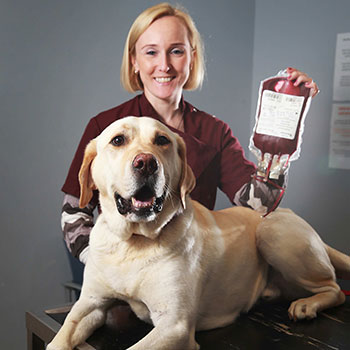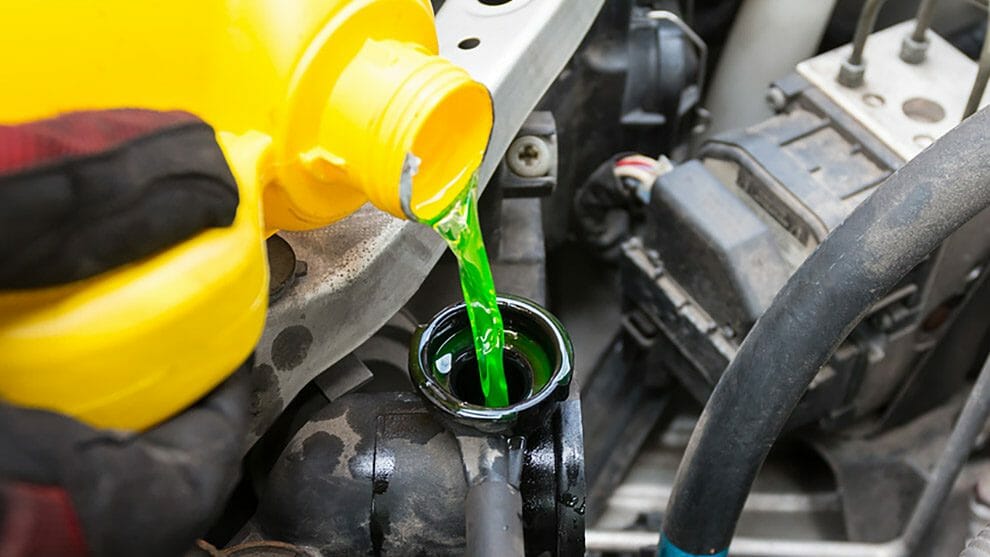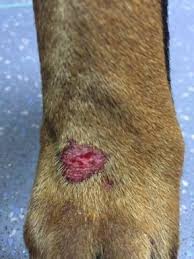If Your Pet Needs a Blood Transfusion - Where Does The Blood Come From?
Nicole Humphries, Pet Blood Banks
 Nicole Humphries ran a blood bank for companion dogs. The questions most people asked her is dog's blood different than cat's, or is a German Shepard's blood different than a Pug's? And where does all this blood come from? You never see a pet bloodmobile in the neighborhood!
Nicole Humphries ran a blood bank for companion dogs. The questions most people asked her is dog's blood different than cat's, or is a German Shepard's blood different than a Pug's? And where does all this blood come from? You never see a pet bloodmobile in the neighborhood!
Pets need transfusions for the same reasons that humans do, including surgery, trauma and disease. A pet blood bank supplies animal blood components for use in these life saving transfusions all across the country. Dog and cat blood is different, meaning you can't use dog blood on a cat or cat blood on a dog. Cats have about three different blood types, while dogs have about eight different blood types.
Pet blood banks work with rescue organizations for blood donors. Most emergency clinics get their blood from a blood bank, but there are some veterinary hospitals that may have their own blood donor.
The blood is shipped out overnight. Any type of plasma, fresh or frozen, must be shipped frozen on ice. Packed blood red cells, or whole blood, have a shelf life of around 42 days.
In order to be a pet blood donor, dogs must be 35 pounds or more, spayed or neutered, have a great temperament and have to be able to sit still.
So how much can a dog donate? They can donate a half unit, which is usually 125ml or a whole unit, or 250ml. To be considered one, full bag of blood, it must weigh 330 grams. The blood is then sold directly to a veterinarian
Pet Photo Santa For A Day
Jerry Carino, Jerry's Jobs
 'Jerry's Jobs' appeared as part of the Carino's Corner series. Jerry has done everything from being a Zombie at Fright Fest to being a baker and a zookeeper, among others. One time he even played a Pet-Photo Santa.
'Jerry's Jobs' appeared as part of the Carino's Corner series. Jerry has done everything from being a Zombie at Fright Fest to being a baker and a zookeeper, among others. One time he even played a Pet-Photo Santa.
Santa Claus' impressive skill set included marshaling a team of reindeer from housetop to housetop, shimmying up and down chimneys and eating an incredible amount of cookies.
Lesser known is the jolly old elf's acumen as a pet whisperer. Think about it: How many dogs and cats has Santa kept calm over the years as he stuffed stockings?
Jerry sought to channel some of that magic at the Jersey Shore Animal Center. For a hairy, fidgety hour he served as a pet-photo Santa.
To prepare, Jerry donned his Santa suit at home and tried posing with his cats. The younger one swiped at him and ran off. His brother was too fat to get away, but he flattened his ears and looked terrified. Jerry's low-pitched, slow delivery of "ho…ho…ho" undoubtedly made it worse.
He then decided to cut out the sound effects at the Jersey Shore Animal Center. Instead, he found it helpful to softly call the pet's name while he rubbed his or her head.
After talking to the regular Santa at the animal center, Jerry knew he had an easy time, as there are so many things that can go wrong! Jerry was lucky to work with a calm group of dogs and cats and didn't have any exotic animals. No one scratched, clawed or relieved themselves on Jerry, and he loved it!
Jerry told us one time someone brought in 5 rats. The rats went into Santa's suit, up the pant legs, down the back. He is so glad he wasn't working that day, as he said he would have probably passed out! There were other stories about cats scratching up the Santa Suit so badly that it had to be replaced. Another time, someone brought in a boa constrictor. So, while Jerry was lucky, he stated that there were many occupational hazards to this job and he left with a healthier respect for St. Nick.
The Deadly Spill - Pet Antifreeze Toxicity - Dr. Debbie
 Chilly winter weather means pet owner must be on the lookout for special health risks. An unfortunately common cold weather emergency is antifreeze poisoning. Just a small spill of this essential car fluid can be fatal for pets. So whether you have a dog, cat or are currently pet less but own a car - this toxicity is one you need to be aware of to keep animals safe.
Chilly winter weather means pet owner must be on the lookout for special health risks. An unfortunately common cold weather emergency is antifreeze poisoning. Just a small spill of this essential car fluid can be fatal for pets. So whether you have a dog, cat or are currently pet less but own a car - this toxicity is one you need to be aware of to keep animals safe.
Antifreeze Toxicity in Pets
Antifreeze contains ethylene glycol, a compound that is used in automobiles to cool engines, and is resistant to freezing temperatures. Ethylene glycol is highly toxic to household pets - just a small quantity causes illness and death. Additionally, antifreeze has a sweet taste that animals find appealing and are apt to drink. Pets that ingest antifreeze rapidly develop neurologic symptoms and kidney failure. Small amounts of antifreeze can prove fatal for pets. Just a teaspoon can prove toxic for a cat or small dog, while several tablespoons are toxic for a larger dog.
Ethylene glycol is also found in some lesser known places but still poses the same toxic risk. It is used in winterizing fluids for toilets in vacation homes and RV's. Ethylene glycol is also found in home solar units, break fluids and within portable basketball goalpost bases.
What Are The Symptoms of Antifreeze Toxicity?
Initial symptoms occur within 30 minutes to 12 hours after ingestion and include increased thirst, increased urination, depression, uncoordination and seizures. Some pet owners describe their pet acting "drunk."
Later symptoms occur 12-72 hours after ingestion and may include severe lethargy, difficulty breathing, mouth ulcers, vomiting and coma.
How is Antifreeze Poisoning Diagnosed and Treated?
Your veterinarian will perform blood work, urine tests and may perform a specific test for the presence of ethylene glycol.
Suspect cases, even if unproven, are aggressively treated with intravenous fluids. Intravenous antidotes are given to bind the toxin, and anti-seizure medication is administered if needed.
Once kidney failure has set in, the prognosis is unfortunately grim for survival.
 How to Prevent Accidental Antifreeze Poisoning?
How to Prevent Accidental Antifreeze Poisoning?
Pet owners should recognize what an antifreeze spill looks like. Look for puddles of this fluid in parking lots, driveways and streets and keep your pets far away. The color of antifreeze may be green, pink, yellow, red, blue or orange. Report antifreeze spills to neighbors and businesses. One time I made a fuss at a pet-friendly coffee bar when I noted an antifreeze puddle smack dab in the path of dogs. Speak up - the life you save could be your own pet.
Don't allow your pets to roam. Outdoor cats and dogs that are permitted to wander are at risk for encountering antifreeze spills. How can you prevent a toxicity when you can't monitor your pet's behavior or whereabouts?
Keep your car and garage safe. Immediately clean up any antifreeze spills and safely secure bottles of antifreeze away from pets and children. Keep up regular automotive maintenance to ensure no antifreeze leaks.
Switch to less toxic antifreeze. While no antifreeze is completely safe, look for antifreeze that contains propylene glycol in place of ethylene glycol. This compound is a safer choice, but still can pose a toxic risk if ingested in larger quantities. Some antifreeze products have a bittering agent included to deter animals and children from ingesting it. But according to the ASPCA, there isn't any published data proving that adding a bittering agent helps to prevent ingestion. Any antifreeze should be considered potentially toxic and handled with appropriate caution.
What to Do if Your Pet Ingests Antifreeze?
Time is of the essence - seek prompt treatment at your veterinarian or emergency hospital for the best chance of survival. Don't wait until serious symptoms arise, because once advanced kidney failure develops, the prognosis is poor.
For more information about pet toxicities visit the ASPCA Animal Poison Control website.
Featured veterinarian known as "Dr. Debbie" on national pet radio program, Animal Radio. Ebook author of "Yorkshire Terriers: How to Be Your Dog's Best Friend"; "Pugs: How to Be Your Dog's Best Friend"; "Mini Schnauzers: How to Be Your Dog's Best Friend"; and "Shih Tzu: How to Be Your Dog's Best Friend." Dr. Debbie's books.
Visit Website
 Animal Radio® News - Lori Brooks
Animal Radio® News - Lori Brooks
Do Dogs Help Out Other Dogs?
Compared to the rest of the animal kingdom, the human capacity for cooperation is something special because working together with someone requires what is called pro-social behavior, kind of like charity, helping others without any direct personal benefit. In this case, researchers studied the pro-social behavior of dogs using a bar-pulling task in which the dogs had to pull trays and decide whether a second dog would receive a treat or not. In the test, the donor dogs used their mouths to pull a string to bring a tray toward a second dog. They could choose either an empty tray or a tray containing a treat on the partner's side. They found that dogs donated to familiar partners more often than to unfamiliar ones. In the experiment, the dog pulling the tray did not get the treat. The only purpose of the task was to benefit the other dog that got the treat.
 Alabama Rot in Dogs Reached the UK
Alabama Rot in Dogs Reached the UK
Dog owners in the UK were warned to be on high alert after cases of Alabama Rot, an extremely rare and deadly canine skin disease, had been diagnosed in new areas for the first time. Alabama Rot is a condition, which begins with ulcers on the dog's skin and lower legs before the rapid onset of kidney failure. It can only be 100-percent confirmed after death and there is no vaccination for it. The disease was first diagnosed in Greyhounds in Alabama, USA. It's not known whether the UK strain was the same or a variant of this infection.
Star Wars Sound Effects Begin With Nature
Back in 1977 the birth of the Star Wars franchise was also the birth of Ben Burtt's legendary career as a sound engineer. He's the genius who contributed to every Star Wars movie and video game and TV show since the beginning, making all the sounds and weird noises you hear in the films. Believe it or not, he started with sounds from nature, mostly animals, to bring Stars Wars to life. For example, the sound of Chewbacca was created using "mostly bears, with a dash of walrus, dog, and lion thrown in." The Sarlacc noise was mainly an orchestra of the sound crew's growling stomachs and the base effect used was an alligator's hiss. Manipulating the vocal styling's of an Asian sea otter named Moda created the sounds of the Tauntauns.
 It's A Crime To Insult King's Dogs
It's A Crime To Insult King's Dogs
If you are a world traveler, never to go Thailand and say something unkind about the king's dogs. Some really strict laws there make it a crime to insult the monarchy and you could go to jail for making disparaging posts about the king's dog. In fact, one man was charged after making a "sarcastic" post about the dog. He faced separate charges of sedition and insulting the king. So, what did he say that was so bad? Who knows! The man's lawyer said the Thai military would not divulge what the remark was. We do know the royal dog in question was Copper, who was widely loved in Thailand. The King rescued Copper from an alley and in 2002 he wrote a best selling book about her. She was so revered there that the media addressed the dog as ma'am.
Cancer Treatment is Expensive For Pets
For owners of dogs and cats stricken with cancer, one of the leading causes of death among companion animals over the age of 6, expensive treatments only adds to the emotional difficulties. Just to figure out what's wrong with an animal, that initial cancer diagnosis can cost between $1,000 and $2,000. A standard course of chemotherapy costs between $3,000 and $5,000, and radiation treatments used for brain and nasal tumors run between $6,000 and $10,000. Of course, for some pet parents, money is no object. More than 70 owners of dogs stricken with lymphoma spent between $16,000 and $25,000 at North Carolina State University on bone marrow transplants for their dogs and the cure rate is only about 33-percent. These aren't just wealthy people. Some used their life savings and even refinanced their houses to pay for the treatments. On top of all that, there are only about 300 veterinary oncologists in the entire U.S.
 Cat Escapes Carrier and Terrorized Flight Attendant
Cat Escapes Carrier and Terrorized Flight Attendant
A mischievous cat escaped its carrier onboard a Delta flight and to the horror of a cat fearing flight attendant, the cat roamed free in the cabin. Of course, someone caught the incident on video and it had some comical moments. For example, as the tortoiseshell cat approached the flight attendant, she is heard telling the animal, "Sit right there, don't move." Of course, the cat does not obey her orders. The poor cat. Its owner fell asleep with headphones on and somehow it managed to get out of the carrier.
 Listen to the entire Podcast of this show (#1257)
Listen to the entire Podcast of this show (#1257)





